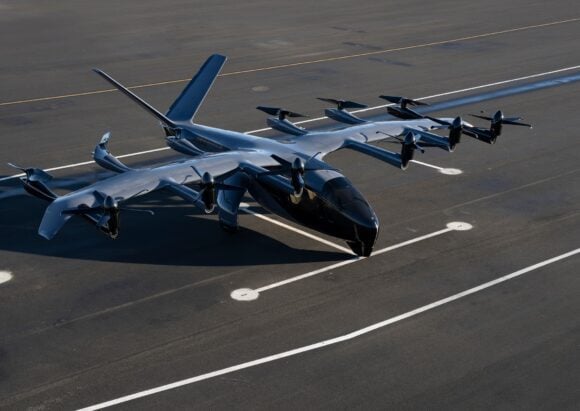
NEXA Study
NBAA concludes that urban air mobility (UAM), including electric and hybrid-electric aircraft, will have a “profound” benefit to business aviation based on the study Business Aviation Embraces Electric Flight, which was released at the NBAA BACE 2019 conference.
NBAA conducted the research in conjunction with NEXA Advisors. The new whitepaper follows an August 2019 study, Urban Air Mobility Economics and Global Markets 2020-2040, by NEXA Advisors that analyzed 74 cities around the world to forecast the financial and economic business case for UAM, examining each city’s needs with respect to infrastructure, regulation, gross domestic product, congestion, and current transportation networks.
NBAA senior VP of strategy and innovation Mike Nichols, co-author of both the study and the whitepaper, commented: “These vehicles will solve the ‘last mile’ or ‘door-to-door’ challenge by moving people quickly from a company office, to meetings in city centers that are near to existing heliports or newly constructed vertiports, or to outlying airports so passengers can depart on a business aircraft or scheduled airline flight.”
According to the experts at NEXA and confirmed through prior analysis going back over two decades, companies that utilize business aviation can:
- ¨ Increase revenues by improving customer relationships and accelerating transactions.
- ¨ Increase earnings growth by providing benefits far greater than costs.
- ¨ Improve asset efficiency by allowing companies to leverage intangible assets, especially top talent.
- ¨ Increase customer satisfaction by allowing more face-to-face contact and moving customers with ease and purpose.
- ¨ Increase employee satisfaction by improving work environments.
According to this study, companies everywhere have long benefitted from business aviation, as demonstrated by a series of NBAA studies, surveys and other types of analysis. For example, a 2017 study from NEXA Advisors measured the effects of business aviation on shareholder value creation of the S&P 500. That report found that business aircraft make a substantial difference in how a company performs its mission, in many cases generating significant gains in shareholder value. Increased mobility was at the core of these gains—satisfying management’s need for greater organizational agility, knowledge integration and transaction speed.
That said, some of the benefits of business aviation cannot always be explained in terms of financial metrics alone. That’s why NEXA developed the UBV Framework of Analysis, which considers business aircraft utilization strategies, the variety of financial and nonfinancial benefits that accrue to operators, and the value drivers those benefits influence. The construct recognizes that the utilization strategies yield benefits that affect an enterprise’s value drivers. Abbreviated, this formula shows how “Utilization yields Benefits which yield enterprise Value” or UBV.
In this recent study, NEXA augmented this framework to illustrate how eVTOL utilization will only further optimize business aviation value. NEXA calls this “electric UBV” (eUBV) to highlight the additive utilization strategies that will be brought about by UAM vehicles.
For business aviation, the study concludes that eVTOL will deliver increased “enterprise value,” an economic measure reflecting the market value of an entire company, and the sum of claims from all security interests: debt holders, preferred shareholders, minority shareholders, common equity holders, and others NEXA explains that enterprise value is one of the fundamental metrics used in business valuation, financial modeling, accounting, and portfolio analysis.
According to NEXA, benefits accruing from use of eVTOL vehicles would be similar to those generated by business aircraft, and contribute directly to shareholder value creation at multiple levels:
- Shareholder level (e.g., market share growth, profit growth, asset efficiency).
- Enterprise-level (e.g., dimensions of improved quality, cost and time).
- Transport of key employees, including efficient travel, but also team thinking regarding business execution, etc.
- Reflection of the vehicles’ use as part of the overall company’s brand, and sharp focus on sustainability.
NEXA’s research revealed some fundamental questions. For example:
- How will flight departments best and most safely plan for and introduce eVTOLs into their business aviation planning?
- How can companies ensure that employees are knowledgeable about, and comfortable with, the new technology as a way to address their transportation challenges?
- How will municipalities work with federal and other authorities to develop a safe, robust infrastructure for the new vehicles?
Finally, NEXA concludes that NBAA and other organizations need to continue their work to address these and myriad other questions, but one thing is clear: Urban Air Mobility will have a profound impact on the future of business aviation.
Insight
NBAA embracing UAM will help to promote the industry and move forward the adoption of electric-powered aircraft to enable the benefits for business aviation.
Views: 1





